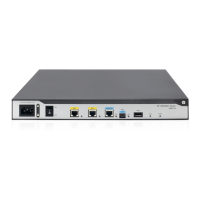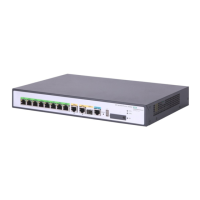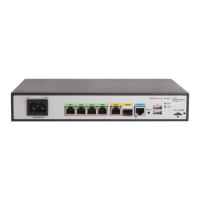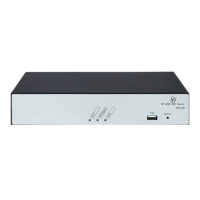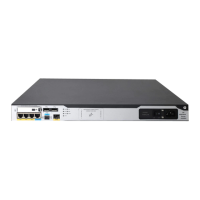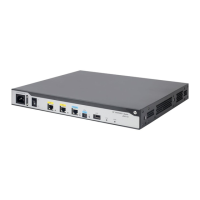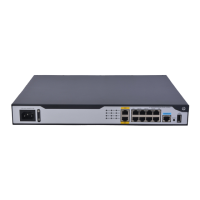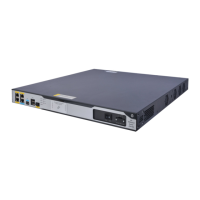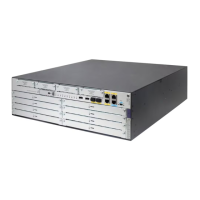Step Command Remarks
11. Set the number of interframe
filling tags.
itf number number The default is four.
12. Set the behavior of the
interface on the FDL in ESF
framing.
fdl { ansi | att | both | none }
The default is none, meaning that
FDL is forbidden.
13. Enable loopback.
loopback { local | payload |
remote }
By default, loopback is disabled.
14. Send remote loopback control
code.
sendloopcode { fdl-ansi-llb-down |
fdl-ansi-llb-up | fdl-ansi-plb-down
| fdl-ansi-plb-up |
fdl-att-plb-down | fdl-att-plb-up |
inband-llb-down | inband-llb-up }
By default, no remote loopback
control code is sent.
15. Restore the default settings for
the CT1/PRI interface.
default N/A
16. (Optional.) Bring up the
CT1/PRI interface.
undo shutdown
By default, a CT1/PRI interface is
up.
17. Enter the view of the
synchronous serial interface
created on the CT1/PRI
interface.
interface serial
interface-number:set-number
or
interface serial
interface-number:23
N/A
18. Set the CRC mode.
crc { 16 | 32 | none } By default, 16-bit CRC is adopted.
Starting a BERT test on a CT1/PRI interface
Bit error rate test (BERT) operates as follows:
1. The local end sends out a pattern, which is looped over on the line and sent back to the local end.
2. The local end checks the received pattern for the bit error rate to help determine the line condition.
You must configure loopback to allow the transmitted pattern to loop back from a specific point on the
line. For example, enable far-end loopback on the remote interface.
To start a BERT test on a CT1/PRI interface:
Step Command Remarks
1. Enter system view.
system-view N/A
2. Enter CT1/PRI interface view.
controller t1 number N/A
3. Start a BERT test.
bert pattern { 2^20 | 2^15 } time
minutes [ unframed ]
By default, no BERT test is
performed.
4. (Optional.) Verify the state
and result of the BERT test.
display controller t1
[ interface-number ]
N/A
27
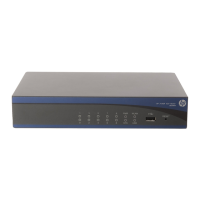
